
The 13th (Western) Division was one of the Kitchener's Army divisions in the First World War, raised from volunteers by Lord Kitchener. It fought at Gallipoli, in Mesopotamia and Persia.

The 29th Division, known as the Incomparable Division, was an infantry division of the British Army, formed in early 1915 by combining various Regular Army units that had been acting as garrisons around the British Empire. Under the command of Major-General Aylmer Hunter-Weston, the division fought throughout the Gallipoli Campaign, including the original landing at Cape Helles. From 1916 to the end of the war the division fought on the Western Front in Belgium and France.

The First Battle of Krithia was the first Allied attempt to advance in the Battle of Gallipoli during the First World War. Starting on 28 April, three days after the Landing at Cape Helles, the defensive power of the Ottoman forces quickly overwhelmed the attack, which suffered from poor leadership and planning, lack of communications, and exhaustion & demoralisation of the troops.

The Lancashire Fusiliers was a line infantry regiment of the British Army that saw distinguished service through many years and wars, including the Second Boer War, the First and Second World Wars, and had many different titles throughout its 280 years of existence. In 1968 the regiment was amalgamated with the other regiments of the Fusilier Brigade – the Royal Northumberland Fusiliers, Royal Warwickshire Fusiliers and the Royal Fusiliers – to form the current Royal Regiment of Fusiliers.
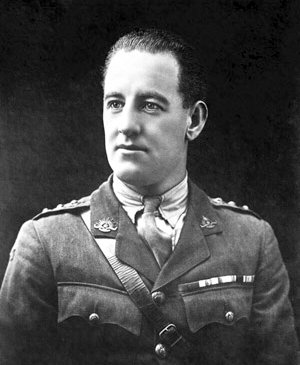
Albert Jacka, was an Australian recipient of the Victoria Cross, the highest decoration for gallantry "in the face of the enemy" that can be awarded to members of the British and Commonwealth armed forces. Jacka was the first Australian to be decorated with the VC during the First World War, receiving the medal for his actions during the Gallipoli Campaign. He later served on the Western Front and was twice more decorated for his bravery.

George Raymond Dallas Moor, was a recipient of the Victoria Cross, the highest award for gallantry in the face of the enemy that can be awarded to British and Commonwealth forces. He was awarded the Victoria Cross for stemming a rout by shooting four of his own soldiers during the Gallipoli campaign in 1915.
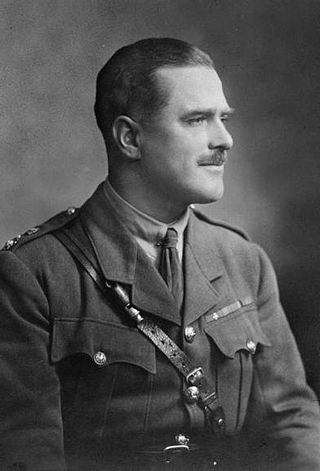
Major Richard Raymond Willis VC was an English recipient of the Victoria Cross, the highest and most prestigious award for gallantry in the face of the enemy that can be awarded to British and Commonwealth forces.
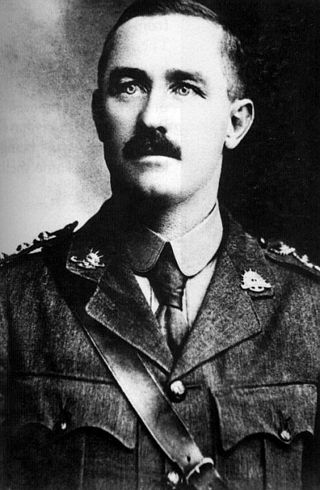
Major Frederick Harold Tubb, VC was an Australian recipient of the Victoria Cross, the highest award for gallantry in the face of the enemy that can be awarded to British and Commonwealth forces.

Alfred John Shout, was a New Zealand–born soldier and an Australian recipient of the Victoria Cross (VC), the highest decoration for gallantry "in the face of the enemy" awarded to members of the British and Commonwealth armed forces. Shout was posthumously awarded the VC for his actions at Lone Pine in August 1915, during the Gallipoli campaign of the First World War. After Ottoman forces had counterattacked and seized a large stretch of the Australians' front line, Shout gathered a small party of men and charged down one trench throwing bombs. He killed eight Turkish soldiers, and managed to clear others to retake the trench. In a similar action later that day, and supported by another officer, he recaptured further ground amid hard fighting. In the final push forward, Shout simultaneously lit three bombs to lob at the enemy. He successfully threw two, but just as the third left his hand it detonated. Shout was grievously wounded; he died two days later.

Frank Edward Stubbs was an English recipient of the Victoria Cross, the highest and most prestigious award for gallantry in the face of the enemy that can be awarded to British and Commonwealth forces.
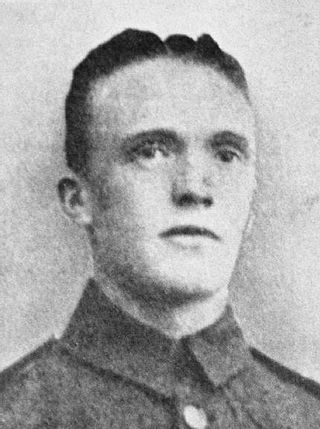
Lieutenant-Colonel John Elisha Grimshaw VC was an English recipient of the Victoria Cross, the highest and most prestigious award for gallantry in the face of the enemy that can be awarded to British and Commonwealth forces.

Lance Sergeant William Stephen Kenealy VC, was an Irish recipient of the Victoria Cross, the highest and most prestigious award for gallantry in the face of the enemy that can be awarded to British and Commonwealth forces.
Sergeant Alfred Joseph Richards VC was an English recipient of the Victoria Cross, the highest and most prestigious award for gallantry in the face of the enemy that can be awarded to British and Commonwealth forces.

William Cosgrove VC MSM was an Irish recipient of the Victoria Cross, the highest and most prestigious award for gallantry in the face of the enemy that can be awarded to British and Commonwealth forces.

Gerald Robert O'Sullivan VC was an Irish recipient of the Victoria Cross, the highest and most prestigious award for gallantry in the face of the enemy that can be awarded to British and Commonwealth forces.
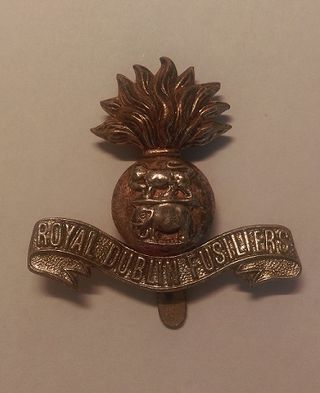
The Royal Dublin Fusiliers was an infantry regiment of the British Army created in 1881 and disbanded in 1922. It was one of eight 'Irish' regiments of the army which were raised and garrisoned in Ireland, with the regiment's home depot being located in Naas. The regiment was created via the amalgamation of the Royal Bombay Fusiliers and Royal Madras Fusiliers, two army regiments stationed in India, with militia units from Dublin and Kildare as part of the Childers Reforms. Both battalions of the regiment served in the Second Boer War.

The battle for No.3 Post was fought during the Gallipoli Campaign in the First World War, between the forces of the New Zealand Mounted Rifles Brigade and the Turkish 19th Division.

The Lancashire Fusiliers War Memorial is a First World War memorial dedicated to members of the Lancashire Fusiliers killed in that conflict. Outside the Fusilier Museum in Bury, Greater Manchester, in North West England, it was unveiled in 1922—on the seventh anniversary of the landing at Cape Helles, part of the Gallipoli Campaign in which the regiment suffered particularly heavy casualties. The memorial was designed by Sir Edwin Lutyens. Lutyens was commissioned in light of a family connection—his father and great uncle were officers in the Lancashire Fusiliers, a fact noted on a plaque nearby. He designed a tall, slender obelisk in Portland stone. The regiment's cap badge is carved near the top on the front and rear, surrounded by a laurel wreath. Further down are inscriptions containing the regiment's motto and a dedication. Two painted stone flags hang from the sides.


















